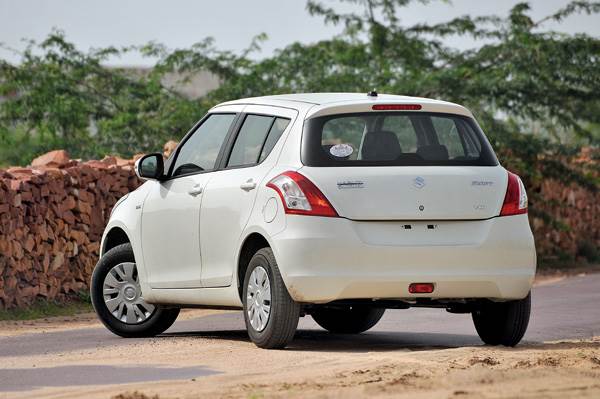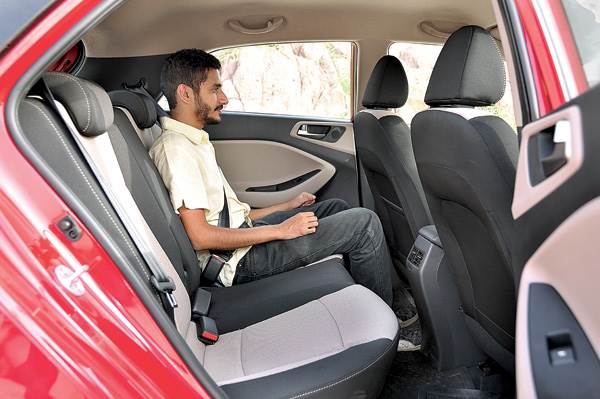What’s new?
When the Grand i10 was launched last year, its superb combination of style, space, quality and equipment made a lot of people wonder if it was necessary to move up to an i20 — the smaller car had pretty much all you needed. Now, however, with the new i20, the game has moved even further, as this new car is bigger, more striking to look at and even more spacious than the last one. Hyundai really wants you to know that this car is a step up from the Grand i10, and has even added the word ‘Elite’ to the car’s name to drive that point home. It promises the same things that made its predecessor great — good looks, loads of equipment and an upmarket feel.
However, this premium positioning comes with a premium price tag, and while the i20 has always sold in good numbers, it could never hope to match Maruti’s class-leading hatchback on sheer sales. The Maruti Swift is the car that, way back in 2005, convinced Indians that hatchbacks could be desirable. It’s no surprise, then, that it’s the second best selling hatchback in India. But it’s not just a better price tag that makes buyers flock to the Swift. It’s a handsome looking hatch that’s comfortable and great to drive, and it comes with Maruti’s legendary reliability and after-sales service backup.
So, let’s look past the sales figures and compare these two cars on their abilities. Which of these premium hatchbacks should you own?
What do they look like?
Both cars have very different styling, and we can see how some would prefer one over the other. The new i20 eschews the rather flamboyant ‘Fluidic’ design theme that has a more restrained look that Hyundai calls ‘Fluidic 2.0’. It uses sharper, straight lines and angles, and though it is not as wild and curvy as before, it certainly is striking. The big hexagonal grille, slim headlamps and the 16-inch alloy wheels give it a lot of presence, and the intricate tail-lights look very classy. As you can probably tell from the picture, the new i20 also looks half a size bigger than the Swift.
However, the Hyundai can be a bit too ‘blingy’ and in-your-face for some tastes; the Maruti instead relies more on good proportions than shiny details. The upright shape, curvy lamps and a roof that stretches all the way to the tail-lamps give it a very sporty profile, and though the car in the pictures is a mid-spec Swift VDi, the top-spec ZDi has bigger 15-inch wheels and wider tyres, that make it look a lot more planted on the road. The Swift, however, is a victim of its own popularity — there are just so many of them on our roads that it does not look as special as it should.
What are they like inside?
The i20’s new two-tone dashboard isn’t as interesting as the last car’s was, but it certainly is neatly laid out and of high quality. The flood of buttons also tells you about all the equipment this car is packing in. The driving position is decent, apart from a rather high dashboard, but a height-adjustable driver’s seat and a steering wheel that adjusts for reach and height (the Swift’s only adjusts for height) make getting comfortable easy. The multifunction steering wheel wrapped in soft leather is nice, the dials are clear and the high-resolution digital trip computer works well too.
It’s hard to find fault with the Swift’s driving position – visibility is great and the steering wheel, gearlever and pedals are in the perfect position. The all-black dash, though sporty, does look a little too plain in comparison. The big front seats also nose ahead of the i20 on comfort and support, and you’d be happier here on a long drive. The fit and finish in this cabin is good in isolation, but it lacks the ultimate richness that the Hyundai offers.
On the practicality front, both cars have a good amount of bottle holders and cubbyholes for the front and rear seats, but the Swift takes a major hit when it comes to boot space. Its 204-litre space is nowhere near as much as the Hyundai’s 285 litres.
Where the i20 really trounces the Swift, however, is at the rear. Space back here is not just good by segment standards, it’s as much as many mid-size sedans! Passengers have plenty of room in all directions, though it must be said that the thick side cushions do tend to push you towards the centre. This has always been a sore point with the Swift. It’s not the widest cabin, and while headroom is okay, legroom is at a premium. Making matters worse is the dark cabin colour scheme and tiny rear windows, which really make you feel cooped up. At least the seat itself is comfortable.
What about the engines?
The i20 uses the same 1.4-litre diesel as its predecessor and that means a healthy 89bhp and 22.4kgm of pulling power. In comparison, the Swift’s 74bhp and 19.37kgm may seem low, but these two engines perform very differently from one another.
The i20’s engine is super refined and delivers its power in a smooth, uninterrupted surge. This does make it quite friendly to drive, as do the light clutch and gearlever, but it does feel a little weak below 2,000rpm and also above 3,500rpm. That means power is concentrated in a small range, so you have to shift gears frequently. And it never feels as powerful as the numbers suggest.
The Swift’s diesel, in comparison has a bit of lag below 1,800rpm, but then power comes in very strongly thereafter. It takes a little getting used to, but once you are, you’ll never feel that this 1.3-litre motor is underpowered; in fact it can be a lot of fun. It isn’t as refined as the i20, and you’ll also get a bit of a drone inside the cabin.
Ride & handling
Here’s where the Swift really redeems itself. Maruti has managed to engineer a wonderful blend of comfort and stability into the car’s suspension, so it absorbs bumps really well without the car becoming too bouncy. Moreover, if you do want to drive it enthusiastically around corners, the body won’t rock around from side to side, and at highway speeds, it feels nice and secure.
That’s not something you can say of the i20. Admittedly, the new car handles bumps in a much more composed manner than the last one, but out on the highway, once you pick up speed, you’ll find that it still tends to ‘float’ up and down, and the nose tends to pitch forward if you go over tall speed breakers, which is a bit of a letdown.
What is still almost as bad as the previous car is the new i20’s steering. It’s way too light and feels disconnected from the front wheels. It never gets heavier when you go faster, or when changing lanes at high speeds, and even in traffic when light steering is beneficial, it doesn’t respond consistently. The Swift, in contrast, is a pleasure to steer at low or high speeds. It goes exactly where you direct it and it’s superb fun to drive enthusiastically. If you enjoy driving, the Swift is definitely the one to pick.
Buying & owning
Both cars are currently available with one petrol and one diesel engine, each with a manual gearbox, although it’s possible that Hyundai might later launch a petrol automatic version of the i20 with a 1.4-litre engine, like the last car.
The new i20 Elite is available in five trims – Era, Magna, Sportz, Sportz (O) and Asta, and the diesels cost Rs 6.10-7.67 lakh while the petrol range costs Rs 4.89-6.47 lakh. The equipment levels are pretty good, but it’s only from the Sportz trim that you feel like you’re getting your money’s worth in terms of goodies.
The Swift is available in just three trim levels – L, V and Z – with the the diesels costing Rs 5.46-6.70 lakh while the petrol range costs Rs 4.42-5.65 lakh. We would definitely recommend picking a ZXi or ZDi for a decent amount of equipment in the Swift.
The i20 CRDi Asta comes with a two-year, unlimited kilometre warranty, which is a little more comprehensive than the Swift ZDi’s two-year, 40,000km warranty.
Equipment & safety
The equipment count is a bit of a landslide in favour of the i20, but what else would you expect from a Hyundai?
For perspective, the Swift’s top-spec ZDi trim is quite decently equipped. It gets automatic climate control, steering-mounted controls, a six-speaker audio system with aux-in, CD player and USB (no Bluetooth though), electrically adjustable mirrors, a digital trip computer, rear windscreen wash and wipe, and doors that auto lock at a certain speed.
The top-spec i20 Asta doesn’t have those auto door locks, but it does have everything else, and then some. There’s a rear air-con vent, an eight-speaker audio system, 1GB of onboard music storage, auto-folding mirrors, automatic headlamps, a cooled glovebox, rear parking sensors, a rear-view camera, as well as keyless entry and go. Phew!
On the safety front, both cars get two airbags and ABS, but it should be noted that you only get these on the top-spec Swifts. On the i20, you do at least get a single airbag as well as ABS on the middle trims.
Verdict
The Maruti swift is still a car we wouldn’t hesitate to recommend, with its great mix of reliability, superb driving habits and comfort. At Rs 6.7 lakh for this top-end diesel, it’s one full lakh less than the top i20 diesel too, and Maruti’s sales and service backup will give you peace of mind. However, as a premium hatchback, it’s simply outclassed by the new Hyundai.
Befitting its ‘Elite’ tag, the new i20 really does feel half a segment higher than the Swift now, and that’s only backed up by the huge amount of cabin space, high-quality materials and long list of equipment. It’s not perfect, of course. Its price (which Hyundai says is only ‘introductory’) makes it the most expensive car in this segment. It’s also still got a long way to go in terms of ride and handling, and the engine, though refined, feels underwhelming. Still, as a package, it does the best job of delivering that premium feel that customers in this segment want.






Comments
Member Login
Personal Details
No comments yet. Be the first to comment.